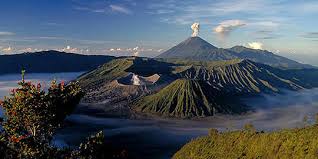salam sustain.
okay for nature lovers around the world especially for those in Indonesia, you must know this one.

With all its natural beauty, including the lake Ranu Kumbolo and peak Mahameru, until now the mountain Semeru still a destination for the activists of the wild, especially the mountain climbers. Moreover, Mount Semeru is a title 'roof of the island of Java'.
Yup, with its height reaching 3,676 mdpl, Semeru mountain became the highest mountain in Java and the highest volcano in Indonesia, after Mount Kerinci in Sumatera and Rinjani mountain in Lombok.
History of Mount Semeru and Puncak Mahameru
.jpg)
However, in addition to storing the beauty of nature is very majestic, Mount Semeru is a mountain that holds important history for some people, especially for the Hindu community. Nevertheless, there is no harm we know the history of Mount Semeru before making the climb there. Here's the review.
The Story of the Legend of Mount Semeru
.jpg)
According to the story contained in an ancient book titled Tantu Pagelaran, written in the 15th century. In the past, the island of Java had been floating in the middle of a vast ocean, oscillated by the waves and often shaky uncertain. Then the god Shiva saw it, at that time the island of Java is overgrown with millet trees, for that is the god Shiva call it the island of Java.
Seeing that, then the gods discuss and agree to nail the island of Java by moving Mount Meru, which is in India, to the island of Java. To do his job, move Mount Meru, god Vishnu incarnate as a giant tortoise and god Brahma incarnate as a very long snake.
Mount Meru is placed on the back of the giant tortoise incarnation of Lord Vishnu, while the long snake incarnation of the god Brahma duty to wrap Mount Meru with the tortoise so as not to fall during the journey.
Arriving on the island of Java, Mount Meru is placed in the western part of Java island, but unbalanced, the eastern part of the island lifted up. Seeing that, the two gods cut Mt. Meru into two parts and placed it in the west and east of Java.
As they brought to the eastern part of the island, Mount Meru was scattered and formed a mountainous line stretching from west to east. Today, one piece of Mount Meru located in the west we are familiar with the name of Pananggungan mountain and the main pieces in the east, we are familiar with the name of Mount Semeru.
According to the Hindu community in Bali and the island of Java, the transfer of Mount Meru to the island of Java is not a mere displacement of a mountain. More than that, it is the displacement of the gods and the noble values in Hinduism.
Because indeed, before it was transferred, by the Hindu community, Mount Meru was believed to be the seat of the gods. This mountain is the place where the earth is connected, the human residence, and the heaven, the gathering place of the gods. Until now, Mount Semeru is believed to be the abode of the gods.
Balinese people are very respectful of Mount Semeru, they believe that Mount Semeru is the father of Mount Agung in Bali. At certain times, when they get the unseen voice, they will hold a ritual offerings to the gods, asking for safety from the anger of Mount Semeru (Jonggring Saloko) which is active until now.
The First Person to Explore Mount Semeru
.jpg)
Clignet, a Dutch geologist, in 1838, he climbed Mount Semeru for the first time performed by humans. At that time he used the Widodaren climbing route.
Then in 1945, a Dutch botanist named Junhuhn, for the first time climb Mount Semeru using the Ayek-Ayek ascent route.
Lastly, there are Van Gogh and Heim. In 1911, they both climbed Mount Semeru through the northern slopes that we currently know with the Ranupane path.
Thus is the history of Mount Semeru and the peak of Mahameru, a beautiful and majestic mountain shaded by the gods, respected by the Hindu community and envisioned by high altars. Until whenever, the peak of Mahameru will always be the eternal peak of the gods.